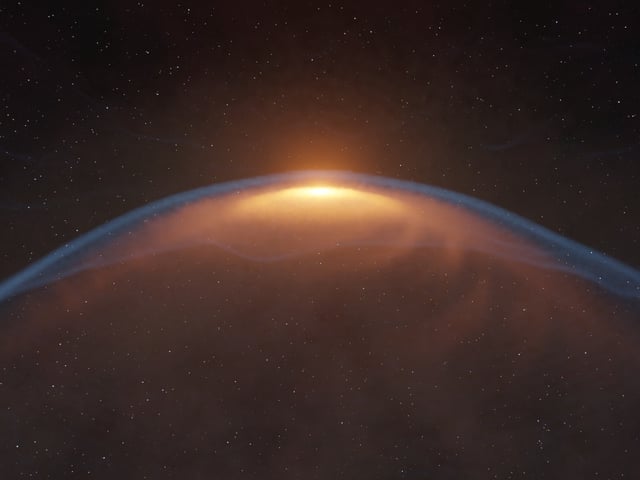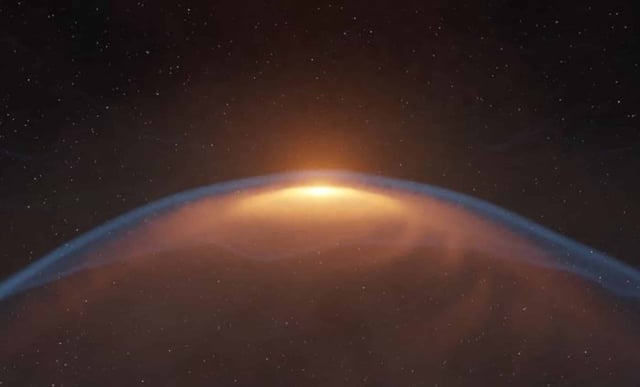Overview
- Analysis of archival ALMA data showed a high-speed jet from star WSB 52 collided with nearby molecular gas, triggering an expanding bubble whose shock front deformed the star’s protoplanetary disk.
- The bubble’s center aligns precisely with the disk’s rotation axis, demonstrating a directed feedback mechanism rather than a chance encounter.
- This is the first observed case of a jet-driven bubble physically impacting a protoplanetary disk, contradicting existing models of early stellar and planetary environments.
- The interaction suggests that young planetary systems may face harsher, more dynamic conditions if such explosive feedback events are common.
- Astronomers have launched follow-up observations to assess how this jet–bubble–disk interaction shapes the birth and evolution of stars and planets.

